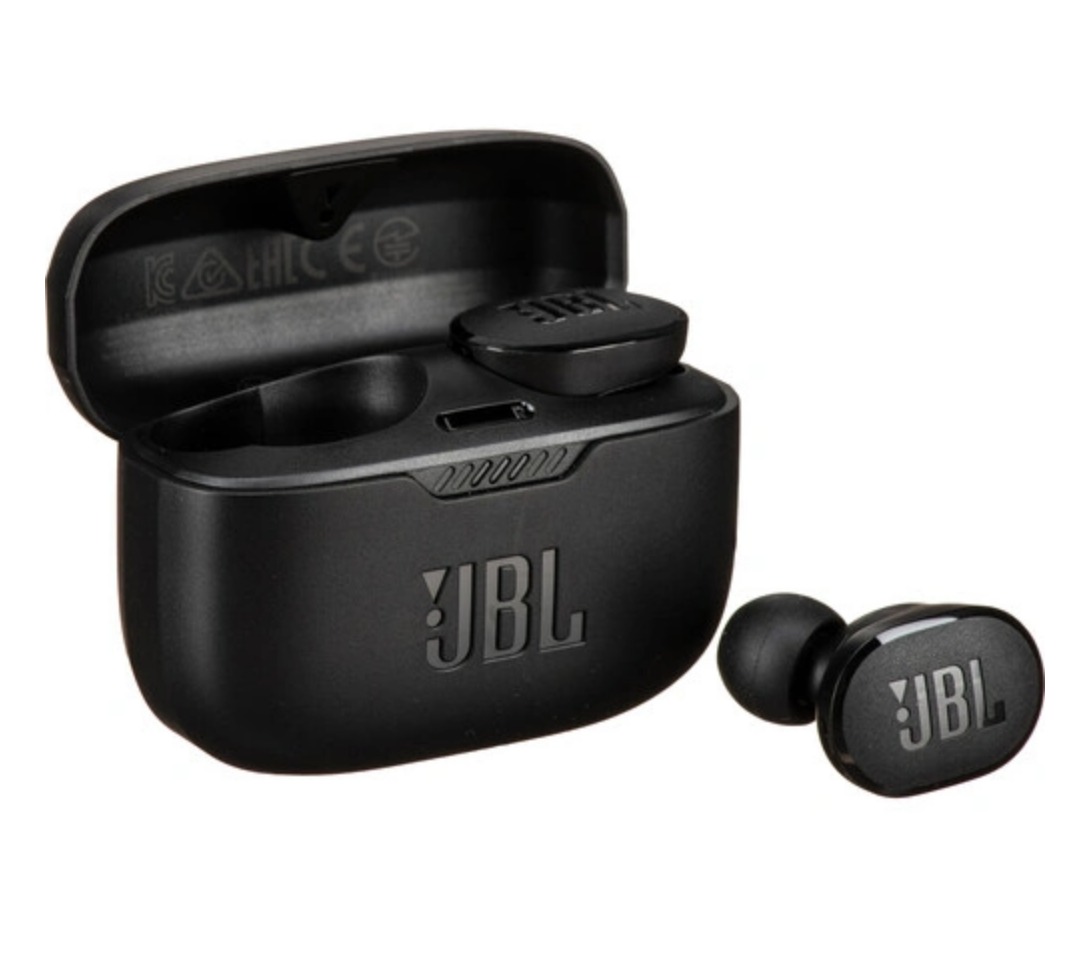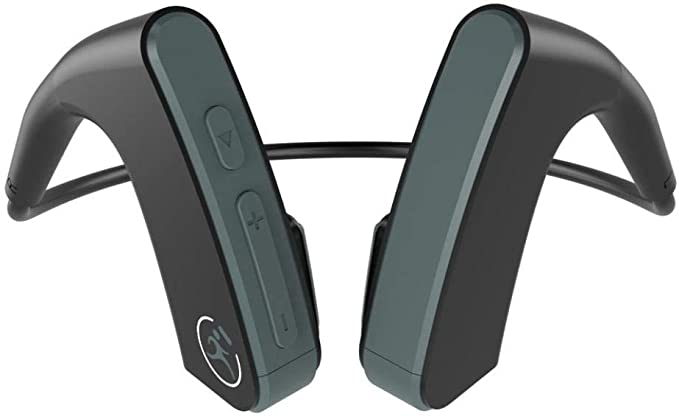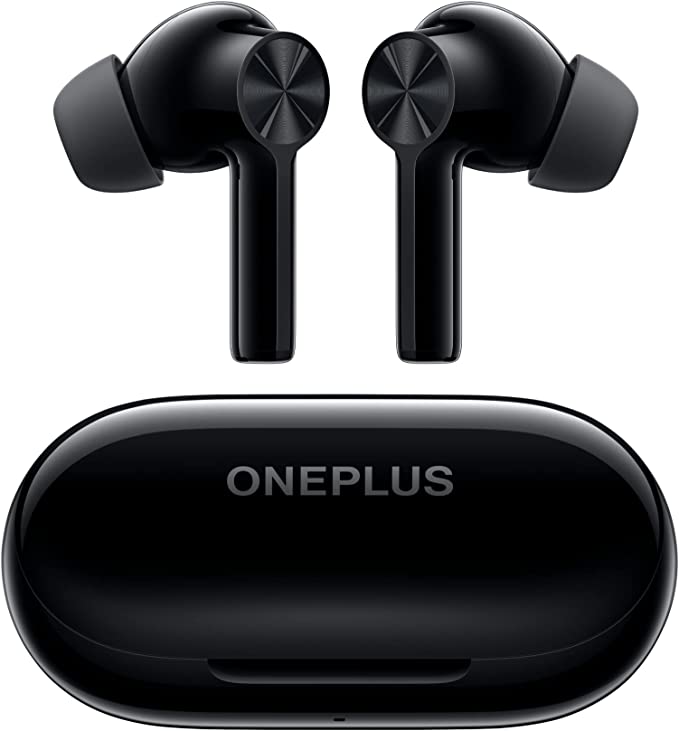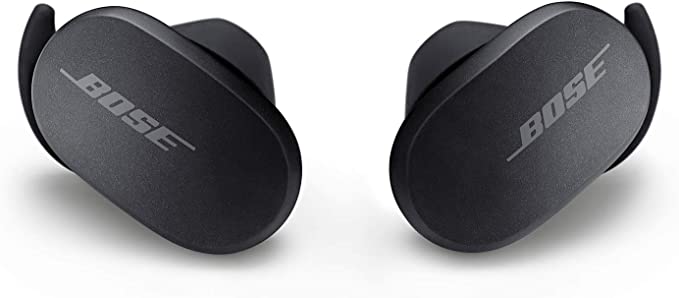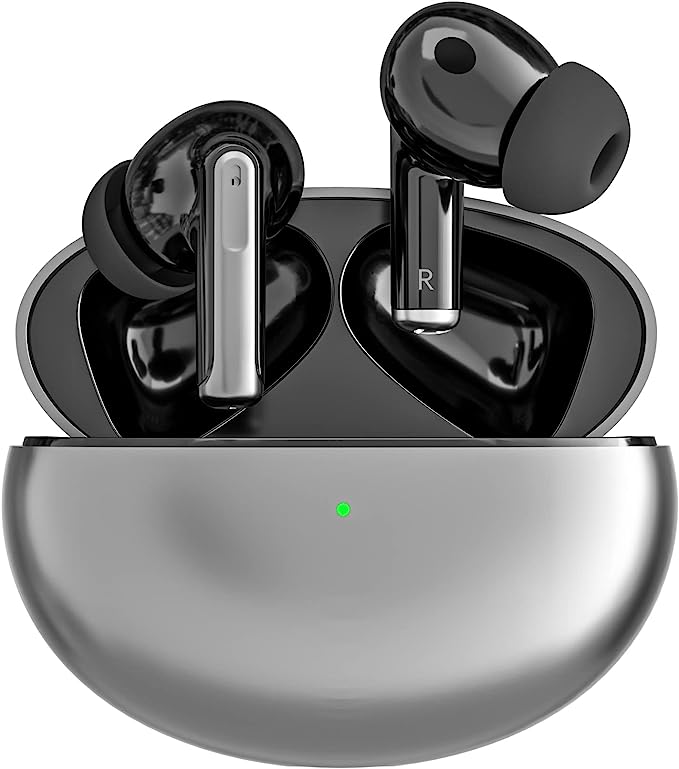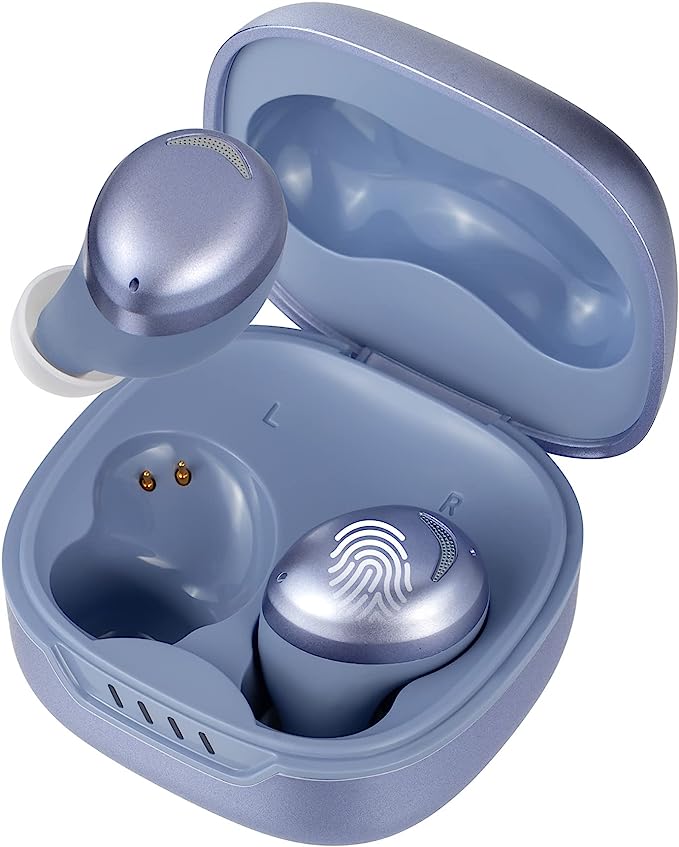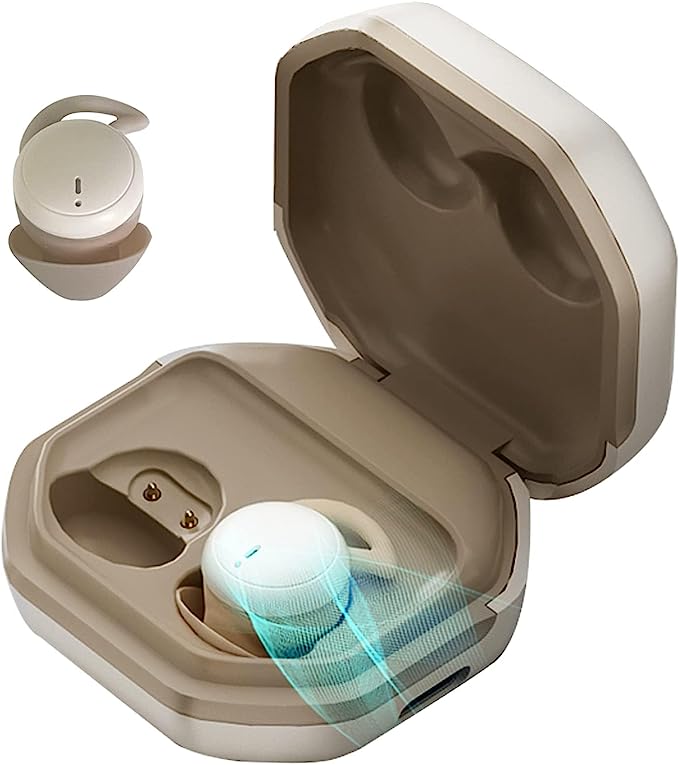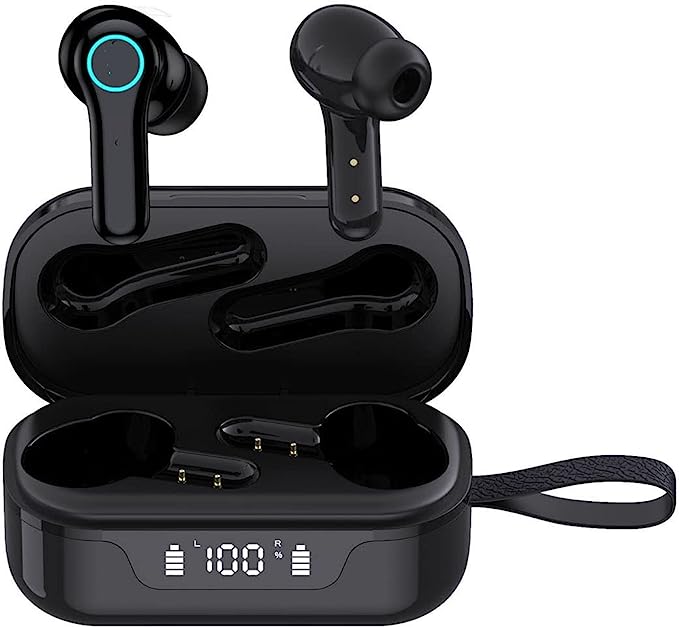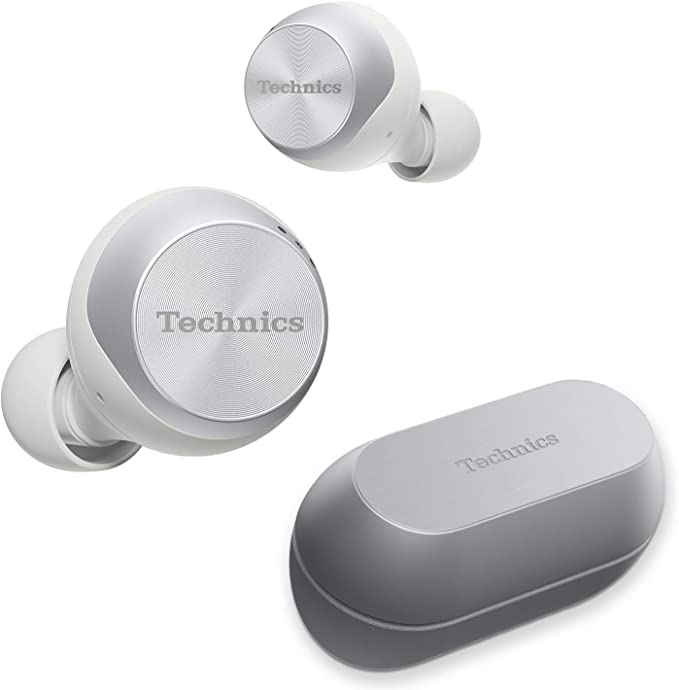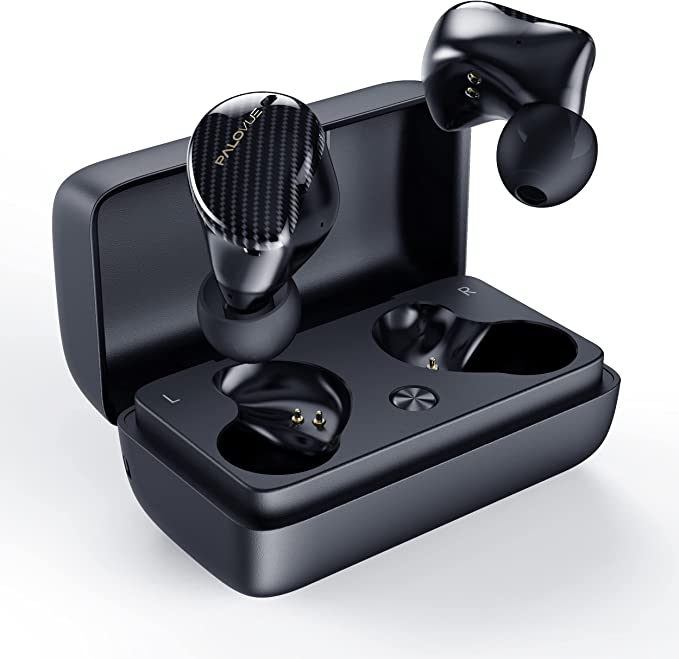Unveiling the Science of Sound: A Deep Dive into the JBL Tune Flex Earbuds
Update on Feb. 17, 2025, 11:41 a.m.
A Noisy World, A Personal Sanctuary
Have you ever tried to concentrate on a busy train, only to be bombarded by the screeching of the rails, the chattering of fellow passengers, and the endless announcements? Or perhaps you’ve struggled to find focus in a bustling coffee shop, surrounded by the clatter of cups and the murmur of conversations? Noise, in its many forms, is an inescapable part of modern life. It can be distracting, stressful, and even harmful to our hearing. For years, I’ve sought refuge in music, using headphones as a shield against the auditory onslaught. But traditional headphones, while helpful, often fall short. They block out all sound, leaving you feeling isolated and unaware of your surroundings. That’s where the fascinating technology of active noise cancellation comes in, and why earbuds like the JBL Tune Flex are so intriguing.

The Sound of Silence: What Is Noise, Anyway?
Before we dive into the intricacies of noise cancellation, let’s take a step back and consider the fundamental nature of sound itself. Sound, in its simplest form, is vibration. When an object vibrates – whether it’s a guitar string, a loudspeaker, or your vocal cords – it creates pressure waves in the surrounding air. These waves travel outward, like ripples in a pond, and when they reach our ears, we perceive them as sound.
These pressure waves have two key properties: frequency and amplitude. Frequency, measured in Hertz (Hz), refers to the number of wave cycles per second. We perceive frequency as pitch: a high-frequency wave sounds like a high-pitched whistle, while a low-frequency wave sounds like a deep rumble. The human ear can typically hear sounds ranging from about 20 Hz to 20,000 Hz, although this range can vary with age and individual differences.
Amplitude, on the other hand, refers to the intensity or “height” of the wave. We perceive amplitude as loudness: a high-amplitude wave sounds loud, while a low amplitude wave sounds soft. Amplitude is often measured in decibels (dB), a logarithmic scale that reflects the vast range of sound intensities our ears can detect.
So, what is “noise”? In the context of acoustics, noise is generally defined as unwanted sound. It can be anything from the constant hum of a refrigerator to the jarring clatter of construction equipment. What one person considers noise, another might find pleasant (think of the rhythmic chugging of a train, which some find soothing and others find unbearable). But regardless of its source, excessive noise can be detrimental to our well-being.

Fighting Fire with Fire: The Magic of Destructive Interference
This is where active noise cancellation (ANC) comes to the rescue. The core principle behind ANC is surprisingly simple, yet incredibly effective: destructive interference. Imagine two identical waves traveling towards each other. If the peak of one wave aligns with the trough of the other, they will effectively cancel each other out. This is destructive interference in action.
Here’s how it works in the JBL Tune Flex (and other ANC earbuds):
-
External Microphones: Tiny microphones on the outside of the earbuds “listen” to the ambient noise surrounding you.
-
Signal Processing: This noise is then fed to a sophisticated digital signal processor (DSP) chip inside the earbuds.
-
Anti-Noise Generation: The DSP analyzes the incoming noise and generates an “anti-noise” signal – a sound wave that is precisely the inverse of the noise. This anti-noise wave has the same amplitude as the noise, but its peaks align with the noise’s troughs, and vice-versa.
-
Sound Mixing: The anti-noise signal is then combined with the audio you’re listening to (music, podcast, etc.) and played through the earbud’s speakers.
-
Cancellation: When the original noise wave and the anti-noise wave meet inside your ear canal, they destructively interfere, significantly reducing the perceived level of the noise.

It’s important to note that ANC is most effective at canceling out low-frequency sounds, such as the rumble of an airplane engine or the hum of traffic. This is because lower frequencies have longer wavelengths, making them easier to predict and counteract. Higher-frequency sounds, like speech or the clatter of keys, are more challenging to cancel completely, although ANC can still reduce their intensity.
Inside the JBL Tune Flex: A Symphony of Technology
The JBL Tune Flex earbuds pack a lot of sophisticated technology into a small package. Let’s take a closer look at some of the key components:
-
Microphone Array: As mentioned earlier, the Tune Flex uses multiple microphones. Two of these are specifically dedicated to ANC, analyzing the external noise. The other two are used for phone calls, employing beamforming technology to focus on your voice and reduce background noise, giving callers a clearer audio experience.
-
Digital Signal Processor (DSP): The DSP is the “brain” of the ANC system. It’s a specialized chip that performs complex calculations in real-time to analyze the noise and generate the anti-noise signal. The DSP also handles other audio processing tasks, such as equalization (EQ) and digital-to-analog conversion.
-
Dynamic Drivers: The Tune Flex uses 12mm dynamic drivers to produce sound. A dynamic driver is essentially a tiny loudspeaker. It consists of a diaphragm (a thin, flexible membrane), a voice coil (a coil of wire), and a magnet. When an electrical signal passes through the voice coil, it creates a magnetic field that interacts with the magnet, causing the diaphragm to vibrate and produce sound waves. The larger the driver, the more air it can move, generally resulting in richer, more powerful bass.

Beyond Silence: Smart Ambient Awareness
While noise cancellation is fantastic for creating a quiet environment, there are times when you need to be aware of your surroundings. That’s where the JBL Tune Flex’s Smart Ambient feature comes in.
-
Ambient Aware: This mode uses the external microphones to amplify ambient sounds, allowing you to hear what’s going on around you without taking your earbuds out. This is particularly useful when walking or cycling outdoors, where situational awareness is crucial for safety.
-
TalkThru: This mode goes a step further. When activated, TalkThru lowers the volume of your music and amplifies voices, making it easy to have a quick conversation without removing your earbuds. It’s perfect for chatting with a colleague, ordering a coffee, or hearing announcements at a train station.
JBL Pure Bass: The Science of Feeling the Music
JBL is known for its signature sound, and the “Pure Bass” technology in the Tune Flex is a key part of that. It’s not just about making the bass louder; it’s about delivering deep, powerful, and accurate bass that you can feel as well as hear.
The 12mm dynamic drivers, as we discussed, are a crucial component. But the design of the acoustic chamber – the space within the earbud housing – also plays a significant role. JBL’s engineers have carefully tuned the shape, size, and materials of the acoustic chamber to optimize the airflow and resonance, enhancing the bass response and overall clarity of the sound.
Real-World Soundscapes
Let’s imagine a few scenarios where the JBL Tune Flex earbuds can make a real difference:
-
The Commuter’s Oasis: Picture yourself on a crowded bus or train. The rumble of the engine, the chatter of passengers, the screeching of brakes – it’s a cacophony of noise. But with the Tune Flex’s ANC activated, you can create your own little oasis of calm. You can finally enjoy your favorite podcast, audiobook, or music without being constantly distracted by the surrounding chaos.
-
The Focused Worker: Whether you’re working from home or in a busy office, noise can be a major impediment to concentration. The Tune Flex earbuds can help you create a quiet workspace, blocking out distractions and allowing you to focus on the task at hand. Need to quickly chat with a colleague? Simply activate TalkThru mode.
-
The Motivated Athlete: When you’re working out, you want to be energized by your music, not drowned out by the sounds of the gym. The Tune Flex’s IPX4 water and sweat resistance makes them perfect for workouts, and the secure fit ensures they’ll stay in place even during intense activity. And with Ambient Aware mode, you can stay aware of your surroundings while running or cycling outdoors.

The Future of Listening
The JBL Tune Flex earbuds represent a significant step forward in personal audio technology. But what does the future hold? We can expect to see even more sophisticated ANC systems, with improved algorithms and more powerful DSPs. We might see earbuds that can automatically adapt to different noise environments, switching between ANC, Ambient Aware, and TalkThru modes seamlessly.
Personalized audio is another exciting area of development. Future earbuds may be able to analyze your individual hearing profile and tailor the sound accordingly, creating a truly customized listening experience. And as battery technology continues to improve, we can expect even longer battery life and faster charging times. The integration of earbuds with other devices and services is also likely to expand, opening up new possibilities for communication, entertainment, and productivity. The journey into sound is always evolving.
